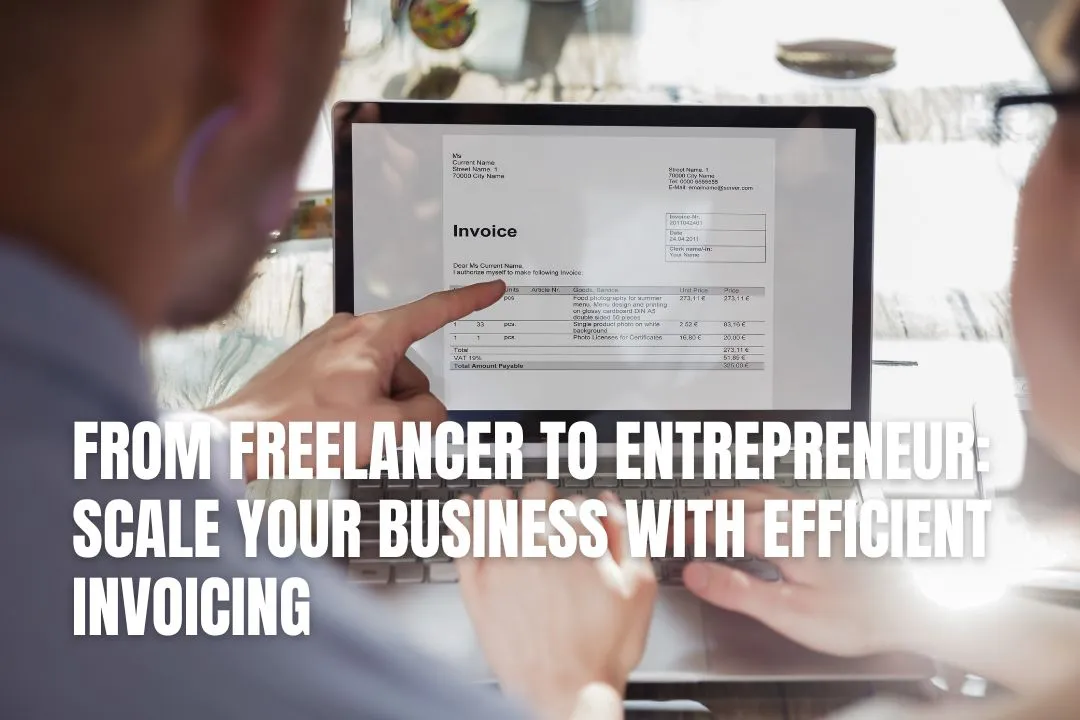
The leap from freelancer to entrepreneur is not about landing bigger clients or hiring your first team member. It's about fundamentally changing how you operate. One of the most overlooked catalysts for this transformation? Your invoicing system. What worked when you were billing three clients a month simply won't cut it when you're managing fifteen projects simultaneously across multiple team members.

Most freelancers treat invoicing as an afterthought, something they cobble together at month's end. Professional entrepreneurs understand that efficient invoicing is the backbone of cash flow management, client relationships, and strategic growth.
For professionals, invoice generator tools like qorp.io are a must-have exactly because these tools turn invoicing from a time drain into a strategic asset. But it’s not just about tools, of course. Let's examine how to build a proper invoicing infrastructure for serious business growth.
As a freelancer, you probably send invoices manually perhaps using a word processor or a basic template. You might wait until work is complete before billing, chase payments individually, and store records wherever they happen to land. This works fine on a small scale.
But consider what happens when you scale up. You're now tracking multiple projects with varying payment terms, managing team expenses that need reimbursing, dealing with international clients in different currencies, and somehow remembering which invoices are 30 days overdue while trying to deliver actual client work.
The time cost is obvious, you're spending hours each month on administrative tasks instead of revenue-generating work. But the hidden costs run deeper:
These inefficiencies compound as you grow, continuously interfering with your business expansion.
Transitioning from freelancer to entrepreneur requires treating invoicing as critical business infrastructure. Here's what that actually means in practice.

Before you hire your first human team member, hire your automation. Modern invoicing systems handle recurring billing, automatic payment reminders, late fee calculations, and expense tracking without supervision. This isn't about convenience, it's about creating predictable cash flow that makes growth financially viable.
Look for platforms that integrate with your project management tools, accounting software, and payment processors. The goal is for information to flow automatically between systems.
Not all invoicing solutions support entrepreneurial growth. Here's what you actually need:
As you bring on contractors or employees, you need controlled access to invoicing. Some team members should create invoices, but not access financial reports. Others need visibility into payment status without editing capabilities. This organisational structure is impossible with freelancer-grade tools.
Entrepreneurs make data-driven decisions. Your invoicing system should provide insights into:
Metric
Why It Matters
Average payment time
Identifies slow-paying clients before they become problems
Revenue by client/project
Shows which work is actually profitable
Outstanding receivables
Enables proactive cash flow management
Payment method analysis
Optimises transaction costs and processing times
These analytics turn invoicing from record-keeping into strategic intelligence that guides business decisions.
Your invoices represent your brand. Templates should reflect your visual identity while maintaining professionalism that builds client confidence. The ability to customise terms, add detailed line items, attach relevant documents, and include project-specific notes demonstrates operational maturity that larger clients expect.
Making the switch doesn't require overhauling everything overnight. Start by implementing automated reminders for existing invoices, this alone typically accelerates payment by 7-10 days. Next, establish standardised payment terms across all clients, eliminating the confusion of bespoke arrangements. Then migrate historical invoices into your new system to create a searchable archive (it always proves invaluable during tax season or client disputes).
The shift from freelancer to entrepreneur isn't about suddenly becoming a different person. It's about building systems that create leverage, where an hour of your effort produces exponentially greater results. Efficient invoicing is where that leverage begins, turning administrative overhead into a strategic advantage that funds your next phase of growth.
The primary difference is the system's purpose. A freelancer's invoicing is often a manual, administrative task done at the end of a project. For an entrepreneur, invoicing is a strategic system designed to manage cash flow, provide business insights, and support a growing team and client base.
Manual invoicing consumes time that you could spend on revenue-generating activities. More importantly, it leads to unpredictable cash flow due to inconsistent follow-ups, damages client relationships through payment confusion, and makes financial planning nearly impossible, effectively stalling your growth.
Look for three core features. First, team management with permissions to control who can create or view financial data. Second, advanced reporting and analytics to track metrics like average payment time and revenue by client. Third, professional customisation to ensure your invoices represent your brand's quality.
Adopt a gradual approach. Start by using the new system for its simplest, high-impact features, like automated payment reminders for your current invoices. Then, begin creating all new client invoices on the platform. Over time, you can migrate historical data to create a unified, searchable archive.
Absolutely. A professional, automated system ensures invoices are clear, consistent, and sent on time. It also handles payment reminders politely and systematically, which helps you avoid awkward and unprofessional conversations about overdue payments, building trust and confidence with your clients.